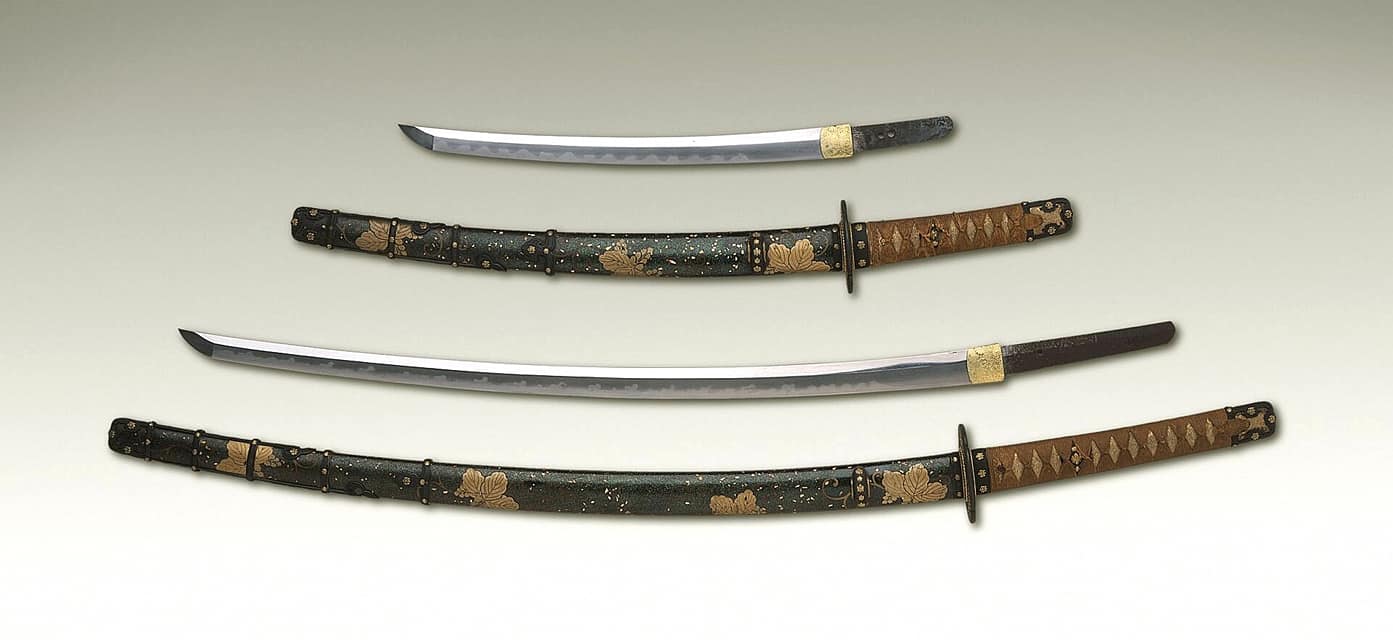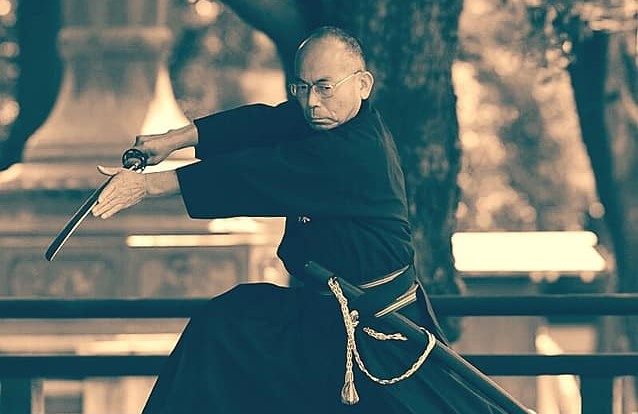From this period, the tang (nakago) of many old tachi were cut and shortened into katana. This kind of remake is called suriage (磨上げ).For example, many of the tachi that Masamune forged during the Kamakura period were converted into katana, so his only existing works are katana and tantō.
From the late Muromachi period (Sengoku period) to the early Edo period, samurai were sometimes equipped with a katana blade pointing downwards like a tachi. This style of sword is called handachi, “half tachi”. In handachi, both styles were often mixed, for example, fastening to the obi was katana style, but metalworking of the scabbard was tachi style.

In the Muromachi period, especially the Sengoku period, people such as farmers, townspeople, and monks could have a sword. However, in 1588 Toyotomi Hideyoshi banned farmers from owning weapons and conducted a sword hunt to forcibly remove swords from anyone identifying as a farmer.
The length of the katana blade varied considerably during the course of its history. In the late 14th and early 15th centuries, katana blades tended to have lengths between 70 and 73 centimetres (28 and 29 in). During the early 16th century, the average length dropped about 10 centimetres (3.9 in), approaching closer to 60 centimetres (24 in).
By the late 16th century, the average length had increased again by about 13 centimetres (5.1 in), returning to approximately 73 centimetres (29 in).
To be continued.
Source: Facebook/Aikido



